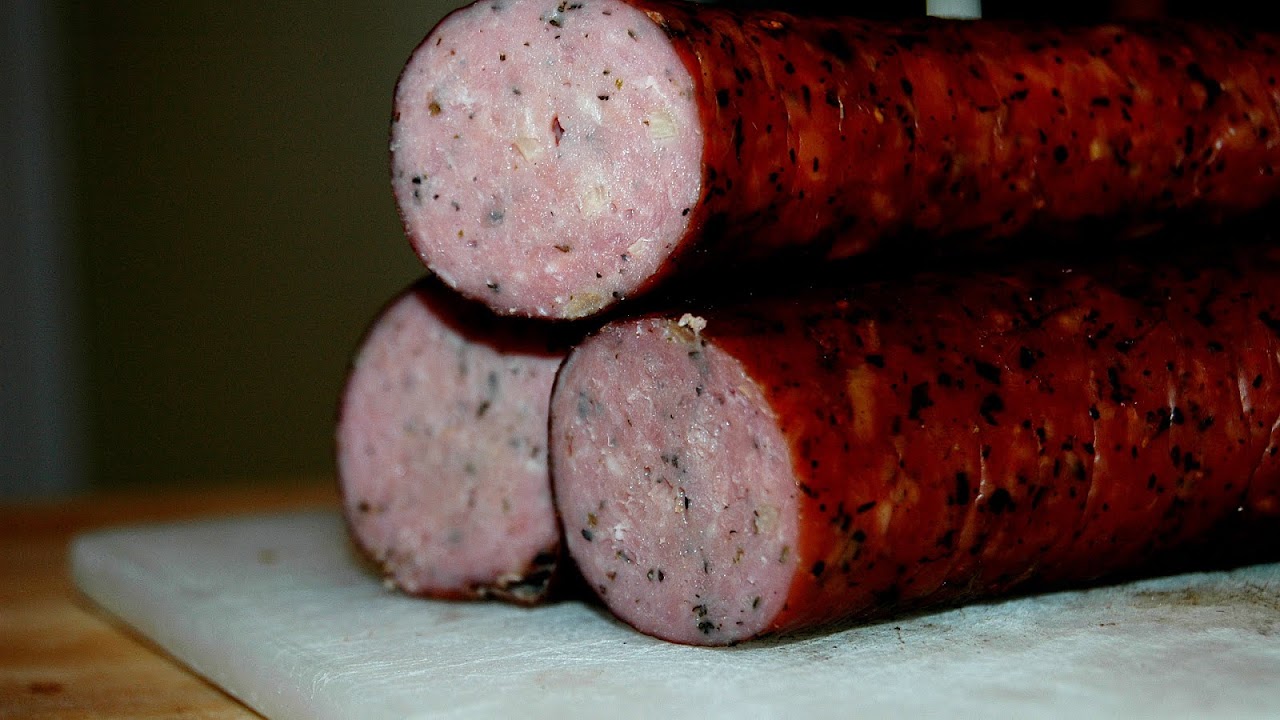
Kie?basa is a type of sausage from Central Europe.

Maps, Directions, and Place Reviews
Etymology and usage
The word entered English directly from Polish kie?basa (/ki:l'b?:s?/ or /k?'b?:s?/), meaning "sausage". Etymological sources state that originally, the word comes from Turkic kol basa, literally "hand-pressed", or kül basa, literally "ash-pressed" (cognate with modern Turkish dish külbast?), or possibly from the Hebrew kol basar (?? ???), literally meaning "all kinds of meat;" however, other origins are also possible.
The terms entered English simultaneously from different sources, which accounts for the different spellings. Usage varies between cultural groups and countries, but overall there is a distinction between American and Canadian usage. In New Jersey, Pennsylvania and most areas of Greater New York City, a plural Polish transitional form is used, kie?basy (pronounced /k?'b?:si:/). Canadians also use the word kubasa (/ku:b?:'s?:/ or /'ku:b?s?:/), a corruption of the Russian kolbasa (???????), and Albertans even abbreviate it as kubie to refer to the sausage eaten on a hot dog bun.
Smoked Kielbasa Recipe Video
Varieties and regional variations
Poland
Sausage is a staple of Polish cuisine and comes in dozens of varieties, smoked or fresh, made with pork, beef, turkey, lamb, chicken or veal with every region having its own speciality. Of these, the kie?basa lisiecka, produced in Ma?opolskie, has, since late 2010 had PGI protection. There are official Polish government guides and classifications of sausages based on size, meat, ready-to-eat or uncooked varieties.
Originally made at home in rural areas, there are a wide variety of recipes for kielbasa preparation at home and for holidays. Kielbasa is also one of the most traditional foods served at Polish weddings. Popular varieties include:
- kabanosy, a thin, air-dried sausage flavoured with caraway seed, originally made of pork
- kie?basa w?dzona, polish smoked sausage, used often in soups.
- krakowska, a thick, straight sausage hot-smoked with pepper and garlic; its name comes from Kraków
- wiejska (['v?ejska]), farmhouse sausage; it is a large U-shaped pork and veal sausage with marjoram and garlic; its name means "rural" or (an adjectival use of) "country", or (adjectival use of) "village".
- weselna, "wedding" sausage, medium thick, u-shaped smoked sausage; often eaten during parties, but not exclusively
- kaszanka or kiszka is a traditional blood sausage or black pudding.
- my?liwska is a smoked, dried pork sausage.
- kie?basa bia?a, a white sausage sold uncooked and often used in soups.
The most popular kie?basa is also called "Kie?basa Polska" ("Polish Sausage") or "Kie?basa Starowiejska" ("Old Countryside Sausage"). This one comes closest to what is generally known in America as "kie?basa" (a Polish sausage). Nowadays, many major meat packers across America offer a product called "kie?basa," usually somewhat different from the original.
In Poland, kie?basa is often served garnished with fried onions, and - in the form of cut pieces - smoked kie?basa can be served cold, hot, boiled, baked or grilled. It can be cooked in soups such as ?urek (sour rye soup), kapu?niak (cabbage soup), or grochówka (pea soup), baked or cooked with sauerkraut, or added to bean dishes, stews (notably bigos, a Polish national dish), and casseroles. Kie?basa is also very popular served cold as cold cuts on a platter, usually for an appetizer at traditional Polish parties. It is also a common snack (zagrycha) served with beer or plain vodka.
A less widely encountered but equally popular variety of kie?basa is the White Fresh (bia?a - i.e. "white"). It is mainly used as a soup meat, and is therefore sold uncooked and unsmoked. When used, it is prepared by boiling, frying or boiling in soup in place of raw meat. This kie?basa's taste is similar to a white Thuringian sausage. Traditionally served with barszcz bia?y.
United States
In the United States, kielbasa which may also be referred to as Polish sausage in some areas, is widely available in grocery stores and speciality import markets. While the smoked variety is more commonly found, the uncured variety is often available, particularly in areas with large Polish populations. Several sandwiches featuring the sausage as a main ingredient have become iconic in local cuisines including Chicago's Maxwell Street Polish, Cleveland's Polish Boy, and several offerings from Primanti Brothers in Pittsburgh.
Canada
In Canada, varieties typical of Poland, Ukraine, and elsewhere are available in supermarkets, and more specific varieties can be found in specialty shops. This type of sausage is particularly associated with the Prairie Provinces, where the Slavic cultural presence is particularly strong. The world's largest display model of a Ukrainian sausage is a roadside attraction in Mundare, Alberta, the home of Stawnichy's Meat Processing.
Hungary
Kolbász is the Hungarian word for sausage. Hungarian cuisine produces a vast number of types of sausages. The most common smoked Hungarian sausages are Gyulai Kolbász, Csaba Kolbász, Csemege Kolbász, Házi Kolbász, Cserkész Kolbász, lightly smoked, like Debreceni Kolbász (or Debreciner) and Lecsókolbász, a spicy sausage made specifically for serving as part of the dish Lecsó, a vegetable stew with peppers and tomatoes. Hungarian boiled sausages are called "Hurka", Liver Sausage, "Májas", and Blood Sausage, "Véres". The main ingredient is liver and rice, or blood and rice. Spices, pepper, and salt are added.

Elsewhere
In Ukraine kielbasa is known as ??????? (pronounced [kovb?'s?]). In Russia it is known as ??????? (pronounced [kolb?s?']). In the Russian language the word kolbasa refers to all sausage-like meat products including salami and bologna. Similar sausages are found in other Slavic nations as well, notably the Czech Republic (spelled "klobása", or regionally "klobás"), Slovakia (spelled "klobása"), and Slovenia (spelled "klobása"). In Croatia, as well as in Bosnia and Herzegovina, Montenegro, and Serbia, this sausage is called "kobasica" or "kobasa", while in Bulgaria and Macedonia it is called "kolbas". In Austria it is called "Klobassa" (similar to the neighbouring Slavic countries). In South Africa, this type of sausage is known as the "Russian" sausage; often deep fried, and served with chips as fast food.
Source of the article : Wikipedia


EmoticonEmoticon